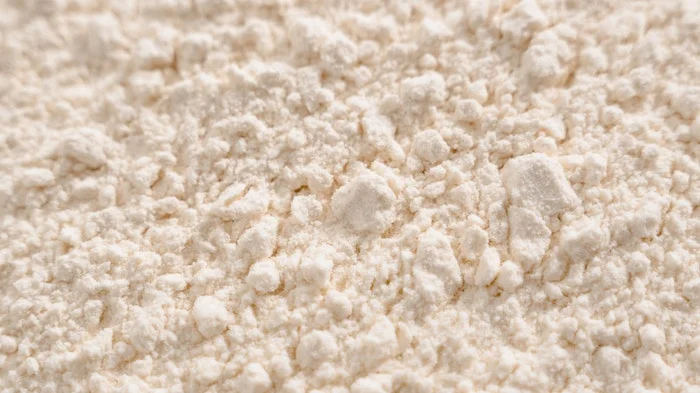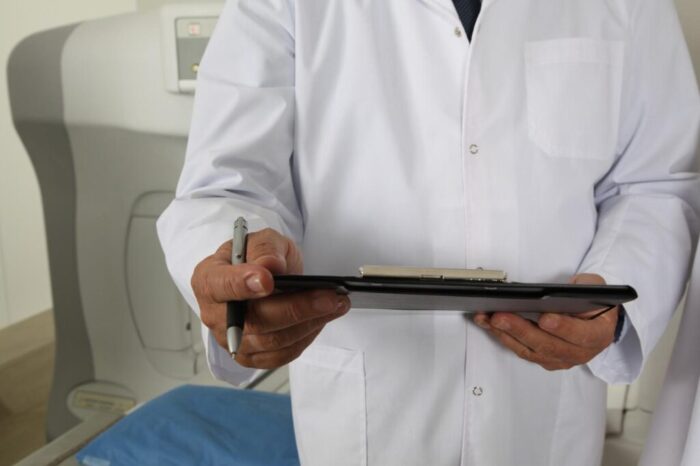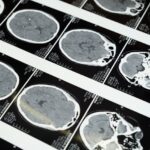Effects of Ketamine on the Bladder
Quick Links for the Effects of Ketamine on the Bladder
- What is Ketamine?
- What is Ketamine Bladder Syndrome?
- What are the Effects of Ketamine on the Bladder?
- What are the Symptoms of Ketamine Bladder Syndrome?
- How is Ketamine Bladder Syndrome Diagnosed?
- How is Ketamine Bladder Syndrome Treated?
- Getting Help for the Effects of Ketamine on the Bladder Today
- References for the Effects of Ketamine on the Bladder
Ketamine is a powerful substance that can have a significant impact on both the body and mind.
One of the more recent discoveries are the debilitating effects of ketamine on the bladder, where prolonged use can result in life-changing consequences.
This condition, known widely as Ketamine Bladder Syndrome, is extremely serious and now forms a key area of concern in the wider field of treating ketamine addiction.
What is Ketamine?

Image of powdered ketamine
Ketamine Hydrochloride is categorised as a dissociative anaesthetic.
Other drugs in this category include nitrous oxide and Phencyclidine (PCP).
Ketamine is often considered unique, as the substance offers three different effects that other drugs can’t produce simultaneously.
These are:
- Hypnotic (sleep-producing)
- Amnesic (short-term memory loss)
- Analgesic (pain-relieving)
These effects can involve distorted perceptions of light and sound, producing an out-of-body experience with hallucinations.
Ketamine is manufactured as a powder or liquid, a substance that can be snorted or injected.
Unlike other substances, Ketamine is used in the medical field as an alternative to morphine [1] or to assist with mental health treatment. It is also used in treating animals.
However, illegal Ketamine can be mixed with other substances or stolen from veterinary clinics, making it difficult to know what it is mixed with.
What is Ketamine Bladder Syndrome?

Patient and medical worker discussing the effects of ketamine on the bladder
Ketamine Bladder Syndrome (also known as K Bladder, Ketamine-Associated Cystitis, Ketamine Uropathy and Ketamine-Associated Urinary Tract Dysfunction) is a term referring to the accumulative damage done to the bladder by Ketamine.
Over time the impact of Ketamine abuse causes significant issues in the body and brain. [2]
This includes everything from fine motor skill issues and persistent nausea to intense abdominal pain, a lack of cognitive ability, mental health issues, schizophrenic symptoms, hallucinations and organ damage.
The mental effects of Ketamine abuse are part of what makes it so addictive.
Ketamine Bladder Syndrome is one of the most widely experienced consequences of Ketamine abusers. [3]
What are the Effects of Ketamine on the Bladder

Doctor noting the effects of ketamine on the bladder
Frequent Ketamine use can cause the walls of the bladder to inflame. This is referred to as cystitis.
Medical professionals believe that, when Ketamine is broken down by the body and passed out as urine, the metabolites produced will irritate the walls of the bladder. This is what causes inflammation and, if it continues unabated, will eventually result in scarring.
A build-up of scar tissue in the bladder is referred to as fibrosis and is extremely difficult to treat, often requiring major surgery.
What are the Symptoms of Ketamine Bladder Syndrome?

Two people discussing the effects of ketamine on the bladder
There are several distinct signs and symptoms of Ketamine Bladder Syndrome. [4]
These include:
- Incontinence (having accidents)
- Pain on passing urine
- Blood in the urine
- Needing to go to the toilet more frequently
- Needing to get up in the night to pass urine
- Pain in the lower abdomen and pelvis area
- Feeling a sense of urgency to pass urine (even when it hasn’t been long since you last went)
Other Bladder Disorders
Many of the signs of Ketamine Bladder Syndrome are also symptoms of other bladder disorders.
This can make the diagnosis of Ketamine Bladder Syndrome particularly difficult.
Other conditions that can be mistaken for Ketamine Bladder Syndrome and vice versa include:
- Bladder stones
- Bladder or kidney infections
- Certain medications
- Enlarged prostate
- Prostate cancer
- Bladder cancer
- Urinary Tract Infections (UTI)
How is Ketamine Bladder Syndrome Diagnosed?

Doctor planning treatment for the effects of ketamine on the bladder
Ketamine Bladder Syndrome was only discovered in 2007 and as such the guidelines for diagnosing it are somewhat untested.
However, if a person is showing distinct signs and symptoms of Ketamine Bladder Syndrome, medical professionals will do their best to provide an effective and accurate diagnosis. [5]
This will involve a series of questions relating to your lifestyle, as well as several clinical assessments to rule of the possibility of other conditions causing these systems.
At this is stage it is vital to be entirely honest about your ketamine use. Doctors are not concerned about whether you have committed a crime – they only want to help you.
Without detailing exactly how ketamine is affecting your life, whether to a GP or to a private drug rehab, you will not be able to get the support you need.
Methods of Testing for Ketamine Bladder Syndrome
Several medical tests are used to determine whether someone is suffering from Ketamine Bladder Syndrome.
These are used both to confirm Ketamine Bladder Syndrome as the cause of certain symptoms and to rule out other potential causes.
These tests include:
Urine Samples
The main purpose of a urine sample during tests for Ketamine Bladder Syndrome is to rule out other potential causes of symptoms. Certain indicators present in urine can be used to detect bladder cancer, kidney stones, prostate issues and a wide range of infections.
Biopsy
A biopsy is a direct issue sample that can be taken and analysed for evidence of inflammation or scarring, indicating the effects of ketamine. These samples are often taken during a camera test.
Cystoscopy (Camera Test)
As a physical camera test, a cystoscopy is able to provide direct visual confirmation of scarring or inflammation in the bladder wall. This test involves passing a small camera into the bladder through the urethra.
CT Scans / Ultrasounds
These tissue imaging scans are able to detect whether any inflammation or scarring is present on the bladder wall.
How is Ketamine Bladder Syndrome Treated?

Medical worker taking notes whilst speaking with a patient about the effects of ketamine on the bladder
Ketamine Bladder Syndrome is a difficult condition to treat, both due to its relatively new status as a physical condition and the general difficulty in treating organ damage, particularly bladder damage.
Currently, there is no way to cure Ketamine Bladder Syndrome.
Instead, treatment is focused squarely on managing symptoms and helping reduce the potential damage that further ketamine abuse will do.
Patients suffering from Ketamine Bladder Syndrome will experience a wide selection of treatments and medical procedures designed to help them overcome a ketamine addiction and minimise the debilitating impact this abuse has had on their bodies.
Beating Ketamine Addiction
Ketamine addiction can be effectively treated at drug and alcohol rehab.
Ketamine, like any other physical substance addiction, creates a dependency that can be broken with a controlled detox and subsequent therapy.
Receiving treatment from a professional ketamine addiction rehab program will help the patient overcome their compulsion to use ketamine and address the fundamental causes that led to its use in the first place, giving them the best chance of avoiding relapse in the future.
Many sufferers of Ketamine Bladder Syndrome have reported that, when their use of ketamine stops, their symptoms begin to improve. [6]
Medications for Ketamine Bladder Syndrome
A key part of beating ketamine addiction and treating the symptoms of Ketamine Bladder Syndrome is limiting the pain and discomfort these conditions bring.
Not only does this make quitting ketamine addiction easier during the detox stage, it can also significantly improve the quality of life for the sufferer.
Common painkillers used to treat ketamine addiction and Ketamine Bladder Syndrome include paracetamol and a selection of nonsteroidal anti-inflammatory medications (NSAIDs), as well as other specialised medications used to limit the urgent sensation to urinate that many victims of Ketamine Bladder Syndrome suffer.
Cystectomy
Bladder transplants are not currently possible and (as of 2024) no one has ever performed a successful bladder transplant on a human being.
Instead, a cystectomy seeks to remove a damaged bladder and replace it with a Continent Urinary Reservoir (CUR) or neobladder, which acts as an artificial bladder. [7]
This bladder is typically formed from a piece of the patient’s intestinal tract which is altered and repositioned within the body to hold urine and pass it through the urethra.
This is an extremely invasive surgery and comes with a significant adjustment time, but it minimises the risk of rejection and allows the patient to live a higher quality of life than if they continued to suffer from Ketamine Bladder Syndrome.
Getting Help for the Effects of Ketamine on the Bladder Today

Two people in recovery from the effects of ketamine on the bladder
Ketamine Bladder Syndrome can be an extremely debilitating issue, one that has the potential to be life-changing in the way it impacts its victims.
It is, however, just one of the many long-term complications that can result from ketamine abuse.
Whether you need help overcoming ketamine addiction, you are reaching out on behalf of a loved one, or if you suspect that you may be suffering from Ketamine Bladder Syndrome, our experts are here to help.
We are here to support you no matter your condition and find you the best possible treatment for your addiction needs.
To learn more about the help available to treat ketamine addiction and Ketamine Bladder Syndrome, call our team for free today on
References for the Effects of Ketamine on the Bladder
[1] https://www.ncbi.nlm.nih.gov/pmc/articles/PMC4258981/
[2] https://www.ncbi.nlm.nih.gov/pmc/articles/PMC8972190/
[4] https://www.ncbi.nlm.nih.gov/pmc/articles/PMC9476224/
[5] https://www.ncbi.nlm.nih.gov/pmc/articles/PMC4544340/
[6] https://pubmed.ncbi.nlm.nih.gov/22416998/
[7] https://www.ncbi.nlm.nih.gov/pmc/articles/PMC4487078/




